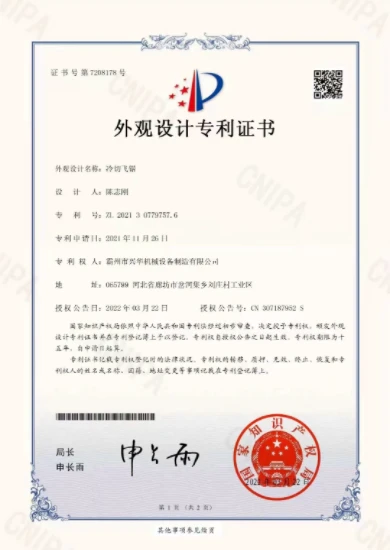machine shear
Understanding Machine Shear A Comprehensive Overview
Machine shear, an essential concept in the realm of manufacturing and material processing, pertains to the technology and apparatus employed to cut materials using a shearing action. This process has pivotal applications in various industries such as metalworking, automotive, aerospace, and construction, where precision cutting and shaping of materials are required.
At its core, machine shear operates on the principle of applying a substantial force to a material, causing it to deform and ultimately fracture along a specific line. This force is generated using two blades — a fixed blade and a moving blade — which slide past each other to produce the necessary shear stress. The result is a clean and precise cut, making machine shear an invaluable tool in manufacturing processes.
Types of Machines Used for Shearing
There are several types of shear machines, each tailored for specific applications and materials. The most common types include
1. Mechanical Shears These are the traditional shearing machines that use mechanical means (often powered by motors) to generate the force required for cutting. Mechanical shears are versatile and can handle a variety of thicknesses and material types.
2. Hydraulic Shears Utilizing hydraulic power, these machines offer enhanced cutting capabilities and can manage thicker materials with ease. Their ability to adjust the cutting force dynamically makes them suitable for heavy-duty applications.
3. Swing Beam Shears This type of mechanical shear employs a pivoting beam to bring the cutting blade down onto the material. Swing beam shears are particularly effective in cutting sheets of metal and are often preferred in workshops for their ease of operation.
4. Guillotine Shears Named after the infamous device used in the French Revolution, guillotine shears are designed for cutting sheet metal in straight lines. These machines are crucial for industries requiring high-volume production and consistent quality.
machine shear

Applications and Benefits of Machine Shear
The applications of machine shear extend to various sectors
. In metal fabrication, for instance, shearing is frequently performed to create specific shapes and sizes of metal sheets before further processing like bending or welding. In the automotive industry, machine shear is crucial for cutting components that will become part of vehicles, maintaining precision and quality control.One of the key benefits of using machine shears is the minimal material waste they produce. Since the cutting action is highly precise, manufacturers can optimize their material usage, thereby reducing operational costs and promoting sustainability. Furthermore, machine shear enhances productivity, with modern machines capable of processing materials at high speeds without compromising quality.
Challenges and Considerations
Despite their advantages, machine shear operations come with challenges. The choice of the right machine depends on several factors, including material thickness, type, and the desired finish. Additionally, operator safety is paramount; shearing machines can be hazardous if not handled correctly. Hence, proper training and adherence to safety protocols are essential to mitigate risks.
Moreover, regular maintenance of shearing equipment is crucial to ensure longevity and performance. Dull blades can lead to rough cuts and increased wear on the machine, necessitating timely blade replacements and machine servicing to keep operations running smoothly.
Conclusion
Machine shear is a critical process in the manufacturing landscape, providing the means to achieve precise cuts and shapes necessary for various applications. From traditional mechanical shears to advanced hydraulic systems, the evolution of shearing technology reflects the industry's growing demand for efficiency and quality. As industries continue to innovate and adapt, machine shear will undoubtedly remain a cornerstone of material processing, driving productivity and contributing to the creation of high-quality products.
-
High Frequency Straight Seam Welded Pipe Production Line-BzZhou Xinghua Machinery Equipment Manufacturing Co., LTD.|line pipe steel&welded gas pipeNewsJul.30,2025
-
High Frequency Straight Seam Welded Pipe Production Line-BzZhou Xinghua Machinery Equipment Manufacturing Co., LTD.|High Precision&Automated SolutionsNewsJul.30,2025
-
High Frequency Straight Seam Welded Pipe Production Line - BzZhou Xinghua Machinery Equipment Manufacturing Co., Ltd.NewsJul.30,2025
-
High Frequency Straight Seam Welded Pipe Production Line-BzZhou Xinghua Machinery Equipment Manufacturing Co., LTD.|Precision Welding, High EfficiencyNewsJul.30,2025
-
High Frequency Straight Seam Welded Pipe Production Line|BzZhou Xinghua|Precision Welding&EfficiencyNewsJul.30,2025
-
High Frequency Straight Seam Welded Pipe Production Line - BzZhou Xinghua|Precision Engineering&EfficiencyNewsJul.30,2025


